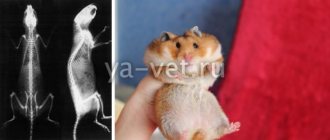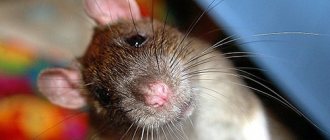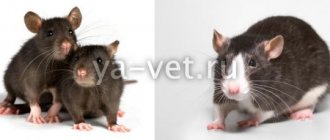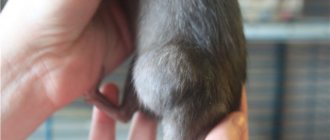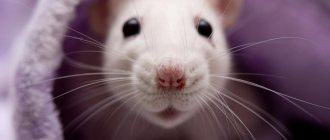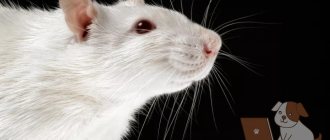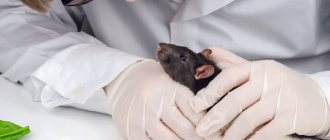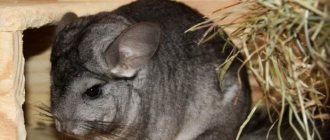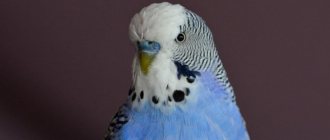A parrot's beak is a unique indicator of health: by its condition one can judge the presence or absence of a disease. The beak serves as the beginning of the digestive system, on which the functioning of all organs in one way or another depends. The article provides a description of possible problems: deformation of the horny plates, delamination, softening, rapid growth and other pathologies.
The structure of a parrot's beak
The beak is an organ made of keratoid tissue that replaces jaws and teeth in birds. Inside the shell there is a bone outgrowth. The oral apparatus of parrots is similar, with the exception of small nuances: size, color of the cere, location of the nasal passages. The organ consists of an upper and lower part, a tendon and a cere with nostrils. Normally, a budgerigar's beak does not peel off. The surface is smooth and shiny. Slight layering is allowed on the sides of the horny structure.
Purpose of the beak:
- capturing and grinding food;
- touch;
- participation in movement;
- communication;
- feeding chicks;
- protection.
A healthy beak is necessary for the normal functioning of birds, but if it peels and cracks, this is not a pathology. The stratum corneum is constantly renewed: it wears off and grows. But if there are obvious signs of a pet’s poor health, it’s worth thinking about why the parrot’s beak is peeling off and growths are forming. This may be the result of some kind of illness, malnutrition, or injury.
How to tame a budgie?
Of course, your budgie will not be immediately open to communication. To tame a budgie you need to be patient with it and earn its trust. Remember that a young parrot is easier to tame. Taming a budgerigar can take 3-4 weeks and you should not rush this process.
During the first days of your pet being in the house, do not annoy him. Let the bird calm down. The budgie needs to look around and adapt to the new environment. After a couple of days, you can leave the door open, giving the bird the opportunity to leave the cage. If there are other pets in the house, especially cats or dogs, limit their access to the area where the bird is. Don't forget to close the vents and windows.
You should not force your budgie out of its cage or place it there. You should evoke only pleasant associations in your parrot. Hand him a treat in your palm without any sudden movements, repeating the parrot's name gently and quietly. Palms should not have any foreign odors. Make your bird feel safe around you. And after a while it will become manual.
Delamination
The beak is a protein structure; Minerals participate in its formation: calcium, zinc, phosphorus. With their deficiency and vitamin deficiency, first of all, the beak changes in appearance. It delaminates and becomes covered with small cracks. Beginners in poultry farming and those who feed their pets only grain often encounter separation.
You can fix the problem by revising your diet. The bird should be given a vitamin complex and sprouted wheat. Don't forget about sepia - a source of minerals. For prevention, eggshell powder, feed yeast, and a little honey are suitable.
Attention! Minor lamination occurs during the molting season. It is quite simple to correct: you need to ensure that there are always branches and stones in the cage for natural sharpening of the beak.
What to feed your budgie?
Keeping a budgie requires a varied and balanced diet. Budgerigars mainly eat grain mixtures. You should buy ready-made feed in transparent sealed plastic packaging to assess the quality of the feed. You can feed budgies separately with sesame, flax, oats, sunflower seeds, canary seeds, or mix them with ready-made food. In winter, you can feed your budgie with sprouted wheat or oats.
In addition to grain, budgies eat various vegetables and fruits: carrots, cucumbers, cabbage, zucchini, beets, apples, peaches, pears. From the berries, you can feed your budgie with raspberries or strawberries. In summer you can give plantain, clover and dandelion leaves. You should not collect wild plants along highways or near industrial facilities. Any greens and fruits should be thoroughly rinsed with water. Budgies should not be given mangoes, avocados, persimmons, papaya, all types of nuts, dill, green onions and buttercups.
Once a week, your budgie should be offered foods that contain calcium (cottage cheese, boiled eggs). You can give special chalk, which is necessary to obtain calcium and other trace elements. A budgerigar should be fed 2 times a day. Provide filtered water at room temperature. The water in the drinking bowl should always be fresh. Vitamins in drops are periodically added to it.
Deformations
Although the beak is very hard and firmly attached, it can become deformed. There is a congenital malformation when a chick is born with an irregularly shaped horn. Most often, such birds do not survive because they do not adapt to grab food. The problem may go away over time if the top and bottom parts close together, otherwise the pet will need special care for the rest of its life.
If a parrot's beak becomes bent at an early age, when the keratoid membrane is pliable, things can still change. When the growth zone is affected, irreversible complications arise. With curved, intersecting halves, shape correction is possible. It is important to see the deformation in time and help the pet. Inexperienced owners do not immediately notice that the parrot’s beak has become crooked. The cause may be an adult bird colliding with an obstacle, for example, hitting glass.
Help
Beak treatment must be carried out immediately after identifying the problem and making a diagnosis, since the inability to eat or breathe normally leads to the rapid development of other diseases, and in advanced cases, to death. The bird should not be treated on its own; You should first consult your veterinarian.
Treatment procedures depend on the final diagnosis. For parasitic, fungal and bacterial infections, appropriate medications are prescribed. If a parrot's beak is broken, it is fixed with special glue and wire. If a bird's beak has darkened, this indicates tissue necrosis; in this case, it is impossible to restore the function of the organ. If the beak looks flaky or soft, or growths have appeared on it, it is necessary to adjust the parrot's diet and introduce vitamin and mineral supplements into it. If the bird's beak shape has changed, it is trimmed accordingly; The same is done for congenital deformities and excessive growth. This must be done carefully so as not to damage the blood vessels.
For any lesions on the beak, the bird requires a special diet. If eating causes pain in your parrot, it should be fed mainly soft and liquid food. Sometimes force feeding through a syringe or tube may be necessary.
Fractures and injuries
With severe bruises, cracks and chips appear on the horny tissue. The plates are split and the jaw bones are displaced. Where blood circulation is impaired, you can see that the beak has darkened. Less commonly, partial tearing of the organ occurs. Parrots, which contain several individuals in one cage, sometimes fight for territory. Violently attacking each other, the rivals inflict serious injuries and damage on each other. One of the most serious consequences of a fight is the tearing of the beak.
If the wound is relatively small, the veterinarian seals the crack with special glue and secures it with wire. Over time, a stratum corneum will grow in place of the broken part. But with a longitudinal fracture, a lot of effort is required to restore the functions of the beak and avoid tissue necrosis. It is difficult to leave a bird with such an injury, because you will have to feed it soft food for a very long time, while protecting it from unnecessary activity.
Hygiene
If you periodically observe the life of a tamed pet, you will certainly notice that it does almost all its daily activities with the help of its beak. Your bird even defends itself exclusively with the help of its strong and powerful beak, which often leaves marks on your hands.
However, without proper attention on your part, misfortune can happen to your budgie. The parrot may want to taste some sharp or simply dangerous object, causing damage to its beak.
Subsequently, some unpleasant disease may develop in the damaged area, threatening the death of the pet. Among the most common injuries and ailments that your budgie can receive due to negligence are a hole in the beak, a tumor, and much more.
Therefore, before your chosen pet settles in the cage you purchased, it should be thoroughly disinfected and treated with boiling water. This is the only way you can guarantee the absence of various pathogens and parasites inside the cell.
Sprawl
The growth of horny plates is affected, first of all, by the lack of hard material. In nature, parrots move freely, tugging at twigs and sorting through stones. They walk along tree rhizomes and climb trunks. The beak and claws wear down naturally. At home, birds are deprived of this opportunity. Smooth cage bars and plastic perches do not contribute to beak shortening.
Other reasons for the rapid regrowth of plates:
- excess macronutrients;
- slow metabolism;
- abundance of fats in the feed;
- infections;
- diseases of internal organs;
- hormonal disbalance.
Due to increased growth of the beak, feeding problems may arise: the long part will interfere with taking food. The bird won't even be able to scratch itself normally. Of course, the pet will try to adapt to the current situation, but it will lose its usual comfort.
The owner should contact a veterinarian. You can try to trim the keratoid plate yourself, just so that the parrot’s beak does not crack. The manipulation is carried out with a nail clipper, having previously marked the place of shortening.
Attention! A sharp instrument must be handled carefully so as not to touch blood vessels. If blood does flow, it is stopped with a solution of hydrogen peroxide.
Congenital diseases
Most beak diseases cause the bird to refuse to eat. Of course, this has a bad effect on his well-being and the health of the bird. And also problems in this organ force one to refuse to meet the need for hygiene and interfere with the flight of the bird.
It also happens that a parrot is born with a problem in such a vital organ. In most cases, congenital beak diseases in parrots cannot be corrected. You can only help the chick with meals - feed it with a spoon or syringe until it learns to peck and drink water on its own.
Adult birds born with a disease in the beak are characterized by the following behavior:
- Hard breath.
- Beak that opens and closes incorrectly.
- Inability to correctly repeat or reproduce a sound.
- Rare flights, a kind of “respite” after flights.
Knemidocoptosis
If the beak turns black or grows back, this is not the worst thing that can happen to a parrot. It is much worse if the bird becomes infected with parasites. These microscopic mites of the genus Knemidocoptes infect non-feathered areas of the body: paws, wax, area around the eyes. Pests live in the epidermis and feed on skin flakes. Their movements and waste products cause severe itching. Ticks are not visible during normal examination, but their presence is indicated by the following symptoms:
- the bird itches intensely and pecks its paws;
- growths appear on the wax;
- crusts accumulate around the eyes;
- plaque on the beak.
In the advanced stage of the disease, the mites move to the beak, it peels off, and its structure is destroyed. Due to the abundance of internal channels, it becomes loose and porous. Getting rid of scabies mites is not easy, you need a systematic approach. To begin with, the bird is isolated from other pets. Disinfect the cage and change all equipment. Aversectin ointment or Vaseline oil is applied daily to the skin and keratinized surface. The course of treatment is from two weeks to a month.
Development by months
In the first months after birth, the appearance of budgerigars changes noticeably. Using the table, you can quickly study the changes taking place:
| Age of budgerigar | Cerise color ( male (1), female (2)) | Eyes | Beak | Drawing on the head |
| Up to 1.5 months | 1) pale pink or purple 2) blue or pink, circles around the nostrils | Eyes completely black | Beak black (some with a black tip) | The wavy pattern of plumage begins from the cere |
| 1.5-3 months. | 1) blue or purple 2) pink or light brown, circles around the nostrils | Eyes completely black | The beak begins to turn yellow, black spots remain | Wavy plumage starts from the cere |
| 3-4 months | 1) blue or dark lilac 2) brown or beige | Eyes completely black | The beak is yellow (sometimes with a green tint) | The first molt, during which the area from the cere becomes smooth |
| 5-8 months | 1) bright blue or purple 2) brown or beige | A white (or light) iris begins to appear around the black eyes | Yellow beak | The waviness “recedes” to the crown, a smooth “cap” is formed on the head |
| Over 8 months | After 8 months wax color does not change | The white edging around the black eyes acquires clear contours | Yellow beak | The hat is smooth, one-color, wavy pattern starts from the neck |
Most varieties of budgerigars already have a fully formed appearance by the age of 8 months, which remains unchanged in subsequent years.
From reputable breeders, each pet has a personal ring. It is put on on the 9th day after the birth of the chick. The ring displays the main information about the parrot and its breed. When purchasing, it is important to make sure that the hoop is solid, without any signs of tampering.
Softening
Another trouble that can happen to a parrot is a softening of the beak. This occurs when there is a lack of calcium and B vitamins. In addition, the stratum corneum softens under the influence of fungi or due to infections - viral, bacterial. Tissues become brittle and mobile. The bird protects its beak and cannot peck grain or care for its feathers. This condition is dangerous due to the presence of microcracks into which food gets, decomposes and serves as a source of infection.
Hypovitaminosis is corrected with the help of veterinary drugs: Gamavit, Beaphar (Beafar), Vinka (Vinka). If the defect appears due to an infectious disease, diagnosis and treatment are carried out by a veterinarian.
Attention! Until the beak gets stronger, the parrot needs to be given semi-liquid, crushed foods. Cracks should be treated with medicine, after removing food particles.
Description
All representatives of various species of the Parrot family have an impressively strong beak. This is the main tool with which a bird obtains food for itself, grinds it, builds a nest, takes care of its own plumage, and even fights off in case of an enemy attack. Ornithologists believe that it is not only a tactile organ (that is, a kind of “third hand”), but also a “third leg” that helps to move along vertical surfaces, such as wood.
The beak of a parrot reminds anyone with any knowledge of zoology of the teeth of rodents. They are also constantly growing, and the animal is forced to grind them down, crushing almost everything in its path. So our bird needs to gnaw either perches, or tree branches brought by the owner, and then, if it happens, parts of the apartment interior. Otherwise, the beak will lengthen so much that the bird will not be able to feed normally.
What does an overgrown beak look like?
It is known that this organ, in its chemical composition, is formed from keratinized rough tissue, and its growth, first of all, depends on the diet provided to the bird. If there are too many minerals in grain mixtures and supplementary foods, the body part in question will lengthen faster than it should. In this case, the owner just needs to reconsider the menu of his feathered friend, perhaps place a special sharpening stone in the cage, and the problem will be solved.
However, it happens that these measures are not enough. And that's why.
Age of a parrot by human standards
Among other species from the Parrot family, budgerigars cannot be called long-livers. There are many breeds whose representatives live for decades. But when compared with human life, wavy individuals live to a ripe old age.
The age ratio between humans and parrots is presented in the table:
| Budgerigar | Human |
| 1 month | 7 months |
| 3 months | 1 year 9 months |
| 6 months | 3 years 6 months |
| 9 months | 5 years 3 months |
| 1 year | 7 years |
| 2 years | 14 years |
| 3 years | 21 years old |
| 4 years | 28 years |
| 5 years | 35 years |
| 6 years | 42 years |
| 7 years | 49 years old |
| 8 years | 56 years old |
| 9 years | 63 years old |
| 10 years | 70 years old |
| 11 years | 77 years old |
| 12 years | 84 years old |
| 13 years | 91 years old |
| 14 years | 98 years old |
| 15 years | 105 years |
The peculiarity of budgerigars is to maintain their appearance and beauty throughout their lives. They are energetic and curious, sociable and often talkative. Pet birds can become true friends in the home.
In order for a parrot to please its owners with its company for as long as possible, it is better to acquire it at a young age. To do this, it is important to study all the distinctive characteristics. Armed with knowledge, you can safely go in search of your future pet.
Internal
Now let's consider the internal structure of a feathered friend, because basically all vital processes take place inside, if they stopped, the bird would not be able to exist. A parrot has 46 chromosomes, just like humans.
Voice apparatus
They have an amazing vocal apparatus, thanks to which they can reproduce various sounds, including human speech.
Birds remember sounds and, with the help of a special structure of the vocal apparatus, are able to reproduce them, as well as produce beautiful singing. They have four modulators, while humans have only one.
Respiratory system
The respiratory system allowed oxygen to enter the bloodstream. Due to the high metabolic rate required for flight, birds experience an increased need for oxygen. The development of an efficient respiratory system allowed the evolution of flight. Birds ventilate their lungs using air sacs. Air sacs can account for up to one-fifth of the body's volume!
They breathe through their nostrils, which are located at the top of the upper beak. From their nostrils, air enters a series of nasal cavities, where the air is cleared of dust and particulate matter. From the nasal cavities, air then passes through the trachea to the syrinx, where the air flow is divided into two parts. Instead of going directly into the lungs, the air first enters the air sacs. It takes two inhalation/exhalation cycles for the air to completely pass through the air sacs and lungs.
The cardiovascular system
The cardiovascular system is responsible for delivering oxygen to the body's cells and also plays an important role in maintaining body temperature. The parrot's circulatory system consists of the heart plus all the vessels used to transport blood (arteries, veins, capillaries).
Like mammals, the heart has four chambers, two atria and two ventricles, which act as two separate pumps. After passing through the body, the blood is pumped under high pressure to the lungs. Upon returning from the lungs, it is pumped under high pressure into the body.
Digestive system
The feathered fellow has some unusual features that help him quickly process food. Birds have high energy demands and therefore need to digest their food very efficiently.
Birds' mouths are very different from ours, and they don't chew like we do. There are no teeth and there is no saliva in the mouth. When they eat, they use their beaks to open seeds, nuts and fruits.
The internal parts of digestion are the liver, gall bladder, intestines, pancreas, stomach and goiter.
Nervous system
The nervous system consists of the brain, spinal cord, and nerves that run throughout the body. Main functions of the nervous system:
- Coordinate body actions by transmitting signals;
- Provide sensory information about the internal and external environment;
- Store information as memory.
Excretory system
Chemical digestion of birds and absorption of nutrients occurs in the small intestine. The small intestine of birds receives bile from the liver and digestive enzymes from the pancreas, which help in this process.
The remaining materials then pass through the colon, which consists of a short colon. Finally, the gastrointestinal tract ends at the cloaca, where fecal and urinary material is collected before it is excreted through the anus.
The urinary system is the body's waste removal system. The main function of the kidneys is to process and remove waste from the blood.
Reproductive system
The genital organs of birds are not particularly developed. Males lack a penis. In order to transfer the ejaculate to the female, the male climbs on his back, the holes are compressed, since the male does not have a penis.
Once intercourse is complete, the sperm travels up the oviduct to the egg, where fertilization occurs. The fertilized egg connects to the yolk sac, both return down the oviduct to an area where a membrane forms around them, and are then expelled through the opening of the locula.
Exceptions
Varieties of budgerigars are divided into 2 large groups. Group 1 includes all types of birds with normal waviness (different colors have their own subgroups). Group 2 includes breeds of parrots that were subject to various mutations and did not retain the wavy pattern. These include the following types:
- birds with opaline color;
- pieds;
- albinos;
- lutinos;
- lacewings;
- harlequins and others.
Parrots of mutation breeds have their own characteristics, so determining their age can be more difficult. Each type has its own characteristic features, namely:
- the wavy pattern on the head is almost always absent; the “cap” adorns the head of both juveniles and adults;
- eyes remain black from birth until old age;
- Lutinos and albinos have red eyes throughout their lives;
- the beak is yellow at birth, or the black color disappears during the first 3-4 weeks of life;
- the cere changes color in the first months only in females (its colors are the same as in ordinary wavy breeds), and males at any age retain the beak pink, white or blue.
Therefore, in recessively variegated and pure parrots, age is determined by the following indicators:
- tail length;
- size of the individual;
- condition of the skin on the paws;
- density and structure of plumage.
Non-standard cases also occur among birds from group 1 with normal undulation. There are chicks that were born with an iris around the eyes or with a bright blue cere. In order not to make a mistake, it is important to consider the parrot according to all the main parameters.
